Artist Stephanie Potter‘s mosaic table top designs are mandalas that catch and hold the eye with contrast, symmetry, and visual interest. They are centered so that the outer circle of tile is at the edge of the circular table tops.
Mosaics made on wooden table tops are for indoor use. Outdoors, the wood swells and contracts with changes in humidity, and that causes tiles to pop off.
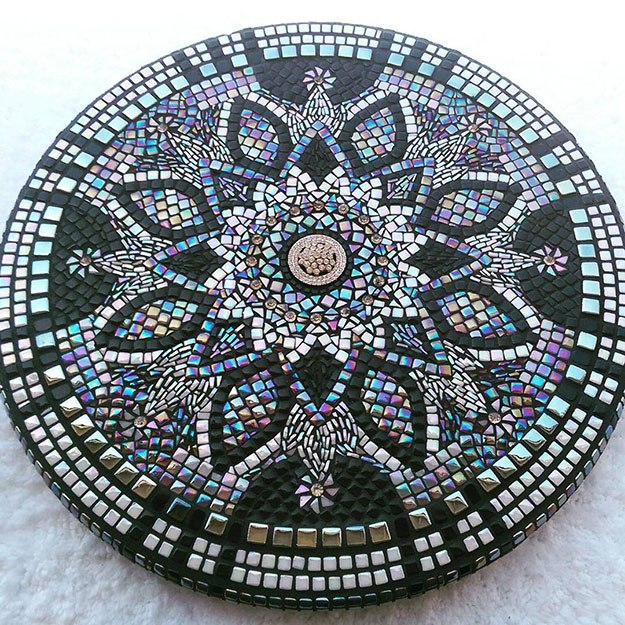
Of course, it is easy to explain how you keep a design centered if you draw out all the work lines for the rows of tile, which would be more or less required for such detailed, symmetrical designs like these made by Stephanie.
But how do you center a mosaic on a round table if your pattern doesn’t show every row of tile? What do you do when you want to improvise a figure in the center of a table but still surround it with concentric rings of tiles where the outermost ring of tile is at the edge of the table?
The answer is that if you need the outermost ring of tile to be at the edge of the table, put them there. Then improvise the figure in the middle. Then fill in the background between the figure and the outermost ring of tile.
For improvised mosaics, this portion filled in last is where you can make slight adjustments in number of rows or spacing or piece size if needed.
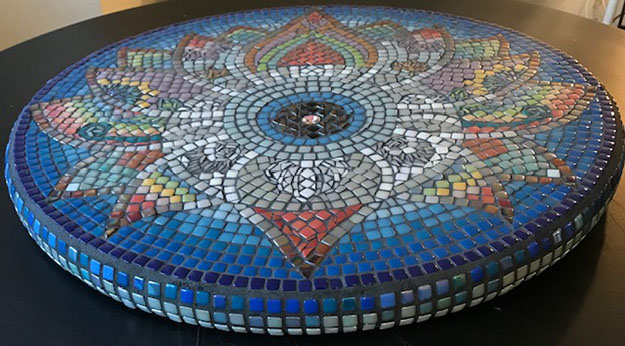
Sides of Table Tops
What to do about the sides of a mosaic table top?
Many people choose to leave the sides un-tiled because the sides of a table top are subject to sharp blows from chairs, walls, door frames, etc., and there tends to be a lot of impact behind these blows because of the weight of the tiled table top. Tiles can get knocked off that way, and so leaving sides un-mosaiced is a natural choice if you are making something for a restaurant or other public space.
For the homes where more care is taken, the sides of the table top could be mosaiced without too much worry, and it does make the mosaic table top look more substantial.
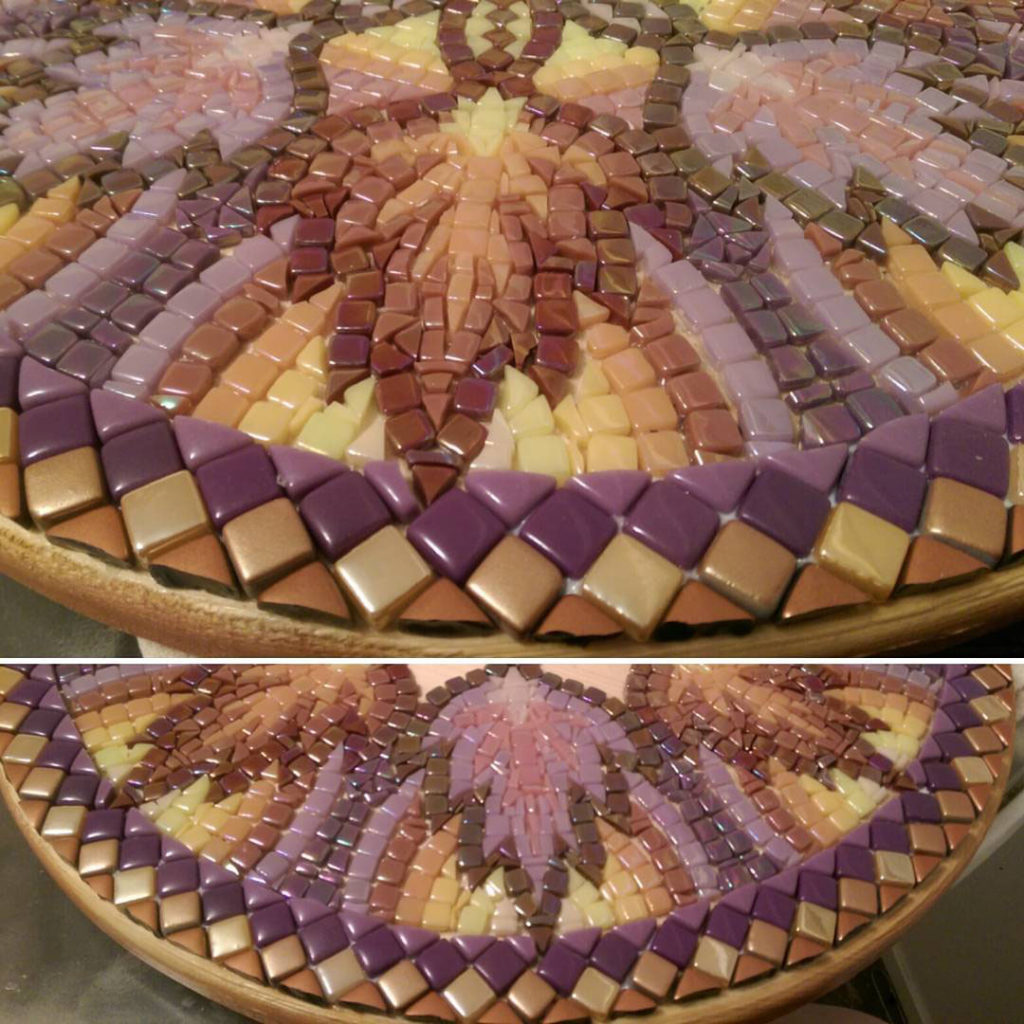
Cut Edges
Cut edges of tiles should be smoothed with a Ceramic-Marble File or better yet, a Diamond-Grit File. Sharp edges can cut hands during the grouting process, and grouting doesn’t fully cover the edges. Grout can erode from gaps over time and expose sharp edges even more.
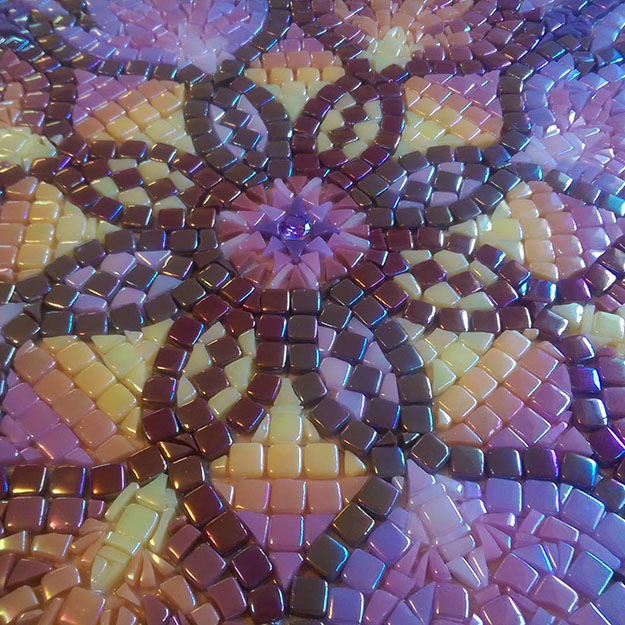
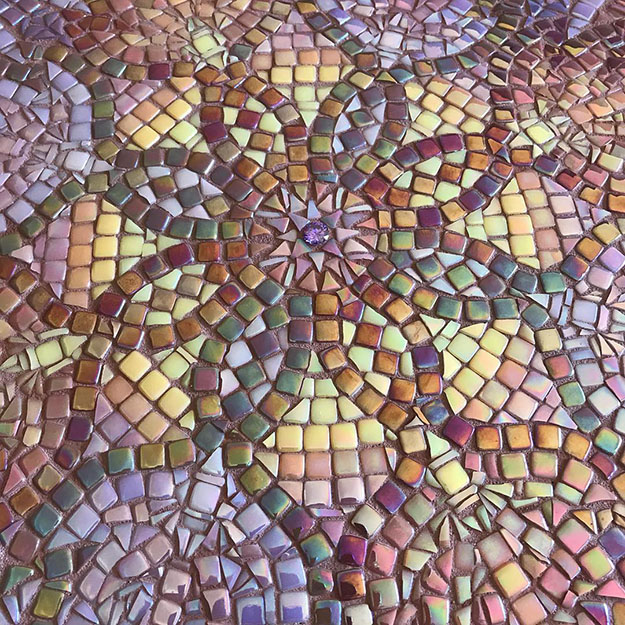

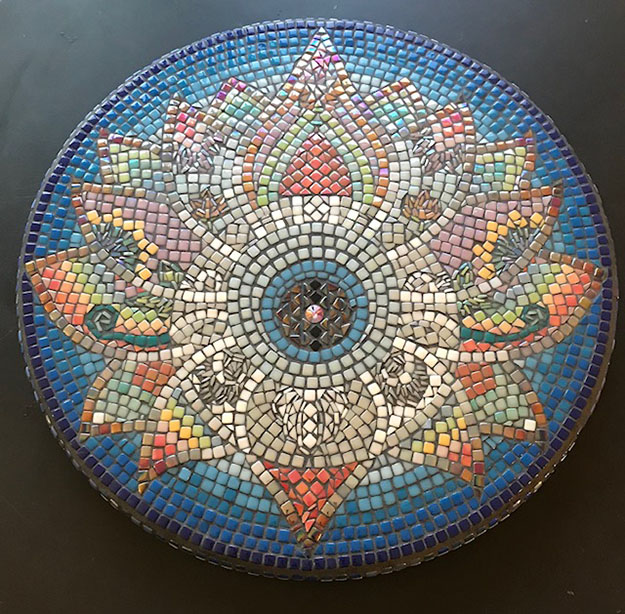
Leave a Reply